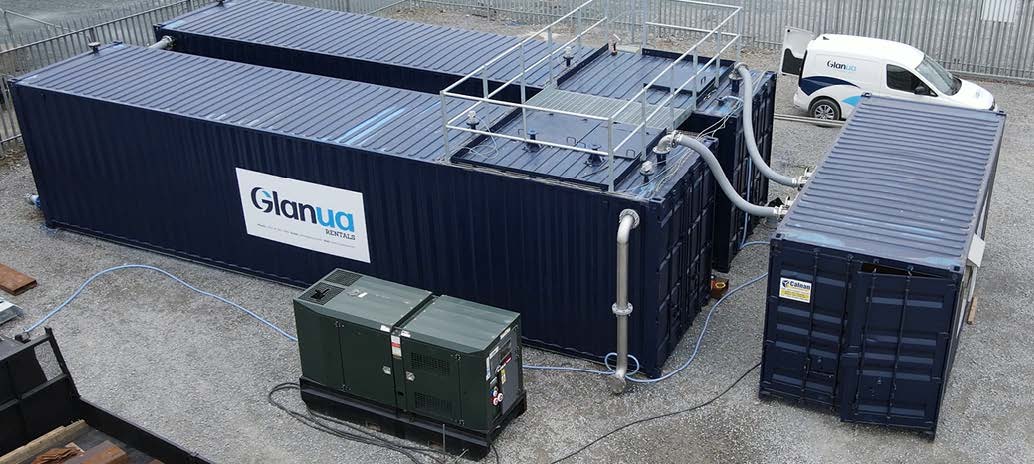Moving Bed Biofilm Reactor (MBBR)
MBBR – treatment technology with a significantly reduced footprint compared to traditional wastewater treatment systems
Moving Bed Biofilm Reactor (MBBR) – A compact, modular solution for aerobic biological wastewater treatment that is both user-friendly and low maintenance.
MBBRs deliver superior treatment performance without the need for large tanks or clarifiers. This makes them ideal for sites with limited space or where expanding the physical footprint is not feasible.
Whether for new installations or retrofit projects, MBBRs provide a space-efficient alternative that meets increasing treatment demands without extensive civil modifications.
A major benefit is the ability to easily upgrade existing activated sludge plants by incorporating MBBR reactors into the current infrastructure. Enabling a boost in capacity and performance without replacing the entire system, allowing facilities to meet stricter regulations or growing demand with minimal downtime and capital investment.
About MBBR
Utilising a fixed-film biological process, this system incorporates specially designed carrier media with a high specific surface area (up to 800m³).
MBBR reactors feature a multi-diffuser aeration system that ensures uniform air distribution across each treatment zone. This setup enhances mixing and maximises oxygen transfer efficiency. Air is delivered through a blower unit that includes both duty and standby blowers, feeding a common manifold accessible at ground level. To optimise performance, a dissolved oxygen monitoring system is also integrated.
Why MBBR?
Key benefits of a MBBR system:
- High Treatment Efficiency – Utilises biofilm attached to carrier media, enabling efficient removal of organic pollutants and ammonia (BOD/COD and nitrogen reduction).
- Compact Footprint – Offers higher treatment capacity in a smaller space compared to traditional systems. Ideal for retrofit projects or areas with limited space.
- Scalability and Modularity – Easily scaled up or down by adjusting the number of reactors or media fill. Can be integrated into existing treatment trains or used as a stand-alone solution.
Benefits of MBBR Systems for Industrial Users
MBBR technology is ideal for industrial applications due to its ability to handle variable loads, treat high-strength and complex wastewater, and maintain reliable performance under fluctuating conditions.
Its compact, modular design allows for space-efficient installation and easy expansion as production scales. With low sludge generation and minimal maintenance requirements, MBBRs help reduce operational disruptions and long-term costs, making them a practical and cost-effective solution for a wide range of industries.
Benefits of MBBR Systems for Municipal Users
For municipalities, MBBR systems offer reliable and energy-efficient treatment of wastewater, ensuring compliance with stringent environmental regulations. Their compact footprint and ability to retrofit into existing infrastructure make them an excellent choice for upgrading aging facilities or accommodating population growth.
With simple operation, minimal operator training, and high resilience to flow variations, MBBRs provide a stable and scalable solution for modern municipal wastewater treatment needs.

Benefits of MBBR Systems for Industrial Users
MBBR technology is ideal for industrial applications due to its ability to handle variable loads, treat high-strength and complex wastewater, and maintain reliable performance under fluctuating conditions.
Its compact, modular design allows for space-efficient installation and easy expansion as production scales. With low sludge generation and minimal maintenance requirements, MBBRs help reduce operational disruptions and long-term costs, making them a practical and cost-effective solution for a wide range of industries.
Benefits of MBBR Systems for Municipal Users
For municipalities, MBBR systems offer reliable and energy-efficient treatment of wastewater, ensuring compliance with stringent environmental regulations. Their compact footprint and ability to retrofit into existing infrastructure make them an excellent choice for upgrading aging facilities or accommodating population growth.
With simple operation, minimal operator training, and high resilience to flow variations, MBBRs provide a stable and scalable solution for modern municipal wastewater treatment needs.